US Stocks React to Inflation Data, Gold Rides High, and Swiss Franc Hits Decade Record | Daily Market Analysis

Key events:
- Canada, UK, Australia, New Zealand - Boxing Day
US stocks experienced a mixed close on Friday as investors approached the Christmas holiday weekend. The market showed fluctuations after absorbing inflation data that was milder than anticipated, solidifying expectations for Federal Reserve interest rate cuts in the upcoming year.
In the course of the afternoon, all three indices exhibited less certainty in the context of light trading, deviating from their initial upward momentum spurred by data indicating a moderation in inflation, aligning more closely with the US central bank's objectives.
While the Nasdaq and the S&P 500 ended on a positive note, the Dow concluded marginally lower. Notably, all three indices achieved their eighth consecutive weekly gains, marking the S&P 500's lengthiest weekly winning streak since late 2017.
For the Nasdaq and the Dow, this represents their lengthiest stretch of consecutive weekly gains since the commencement of 2019. The Dow Jones Industrial Average saw a decline of 18.38 points, the S&P 500 registered a gain of 7.88 points, and the Nasdaq Composite added 29.11 points.

Gold prices experienced an increase in low-volume Asian trade on Tuesday, breaking free from a trading range that persisted through most of December. The surge was attributed to soft US inflation data, intensifying speculation about potential early interest rate cuts in 2024.
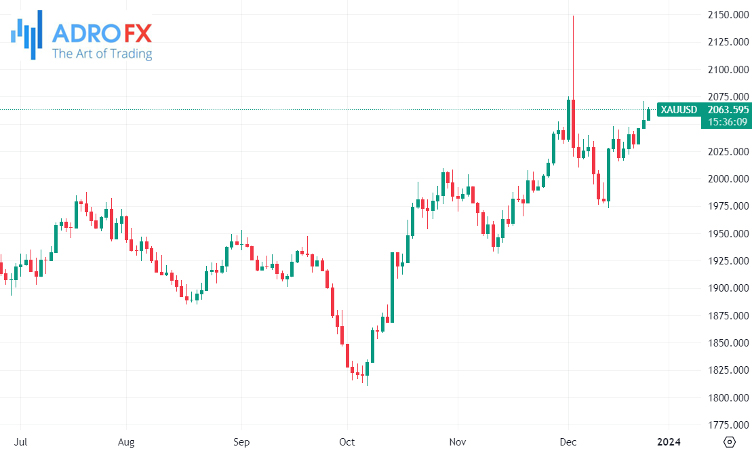
The precious metal had been on a robust upward trajectory in recent sessions, spurred by a lower-than-expected reading on the PCE price index, the Federal Reserve's preferred gauge for inflation. This data followed dovish signals from the Fed in its final meeting for 2023, fostering optimism that the central bank might initiate interest rate reductions as early as March 2024.
This optimistic outlook boded well for gold, as higher interest rates elevate the opportunity cost of investing in bullion. Meanwhile, the US dollar encountered challenges in gaining traction in the global currency markets, influenced by recent data indicating a slowdown in US inflation. This development heightened expectations of potential interest rate easing by the Federal Reserve in the upcoming year.
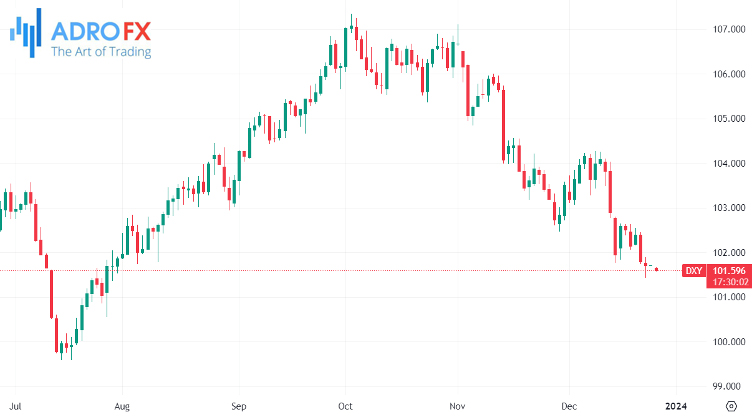
Amidst thin trading during the holiday season, the euro and sterling exhibited marginal changes against the dollar, while the Australian and New Zealand dollars remained near their five-month highs. The dollar index hovered around a five-month low, reflecting market anticipation of potential Fed rate cuts. This sentiment gained strength from recent US data revealing a decrease in prices for the first time in over three and a half years, signaling a deceleration in the annual inflation rate.
Concurrently, the yen stabilized near its recent five-month peak on the prospect that the Bank of Japan (BOJ) might soon conclude its ultra-easy policy. This policy, in place for much of 2022 and 2023, had exerted pressure on the Japanese currency as other major central banks globally engaged in aggressive rate-hike cycles.
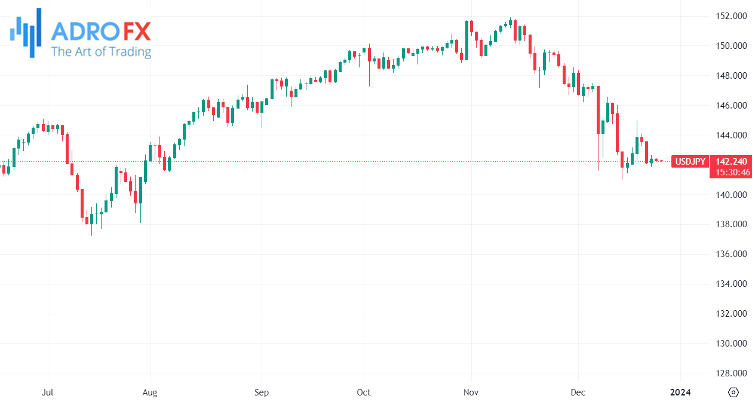
On Friday, the Swiss Franc reached nearly nine-year highs against the dollar, exhibiting a remarkable year-to-date increase of over 6.2% and 8% when measured against both the US dollar and the Euro. The Swiss Franc has emerged as the standout performer throughout the year, experiencing a particularly notable surge in recent months. This strength is attributed, in part, to the declining yields of US and eurozone government bonds, favoring the Swiss Franc.
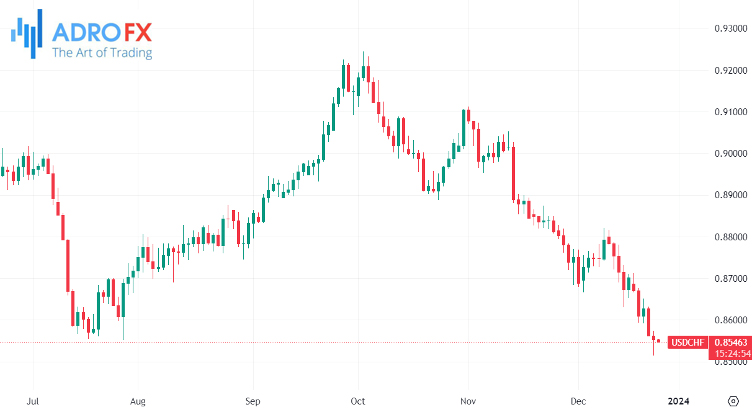
USD/CHF daily chartSince its peak in early October, the spread between US and Swiss 10-year yields has contracted by 0.6 percentage points to 3.17%, while the Eurozone and Switzerland yield differential narrowed by 0.53 points to 1.2. The substantial decline in US and European yields has enhanced the relative appeal of investments in Swiss debt instruments.
Despite the Swiss National Bank (SNB) adopting a conservative stance on monetary policy in the past week - a contrast to Powell's dovish approach- it's essential to recognize the SNB's history of interventions aimed at weakening the national currency. The SNB has a preference for conducting interventions by purchasing dollars and euros for the reserve fund rather than trying to curb the depreciation of the exchange rate by selling off assets. This strategic approach underscores the SNB's commitment to managing the strength of the Swiss Franc.
Apart from that, recent data from the UK presented a nuanced economic scenario, with market attention predominantly fixated on the positive aspects, consistent with recent trends.
A notable bright spot was the unexpected 1.3% surge in retail sales for November, surpassing the anticipated 0.4% increase. This propelled the index into positive territory compared to the previous year, albeit modestly at +0.1% year-on-year. Excluding fuel, sales demonstrated a 0.3% year-on-year increase. In response to these better-than-expected statistics, the pound saw a gain of a quarter of a cent, reaching 1.2710.
However, these positive figures are juxtaposed against a broader context of challenges. The nominal retail sales index has remained stagnant for the past fifteen months, implying a situation more characterized by the retention of demand rather than a genuine recovery. This deviation from the long-term trend is reminiscent of the prolonged stagnation experienced after the global financial crisis.
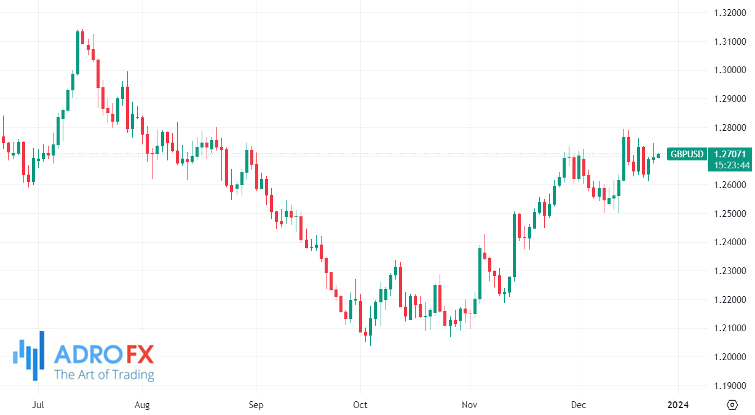
Despite this economic backdrop, the pound has been strengthening against the dollar since November. It is noteworthy that, fundamentally, the UK economy might be more in need of an interest rate cut compared to the US economy. However, GBP/USD has been on an upward trajectory as market participants primarily speculate around a potential US monetary policy reversal, leading to a sell-off of the dollar. In contrast, data from Europe seems to have only a brief impact on the markets following its release.









